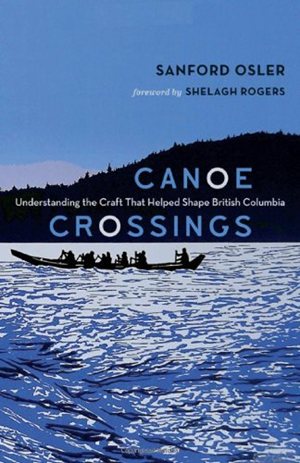Canoe Crossings: Understanding the Craft That Helped Shape British Columbia

Support Canada's History in other ways (more)
by Sanford Osler
Heritage House, Victoria, 2014
160 pp., illus., $19.95 paperback
This slim volume looks at the different kinds of canoes — birchbark, dugout, and animal-skin canoes — and how they evolved. And, while marketed towards British Columbia, much of it could apply to many regions of the country, since canoes have long been a part of Canada’s history.
Author Sanford Osler explains the importance of the birchbark canoe to the fur trade. Over time, birchbark was replaced with cedar strips, then canvas, and, later, metal or fibreglas. But the basic design of today’s recreational canoes is not much different from the original Aboriginal version.
The most awe-inspiring of Canada’s canoes are undoubtedly the ornately carved and painted ocean-going war canoes built the Haida people of Haida Gwaii. The art of building these massive watercraft was almost lost until artist Bill Reid successfully built a canoe called Lootass (“wave eater“) for Vancouver’s Expo 86. Lootass became the inspiration to construct many more canoes of that type, and it became a strong symbol of Haida identity.
Canoe Crossings is less an exhaustive history and more of an overview, with reflections on how the canoe can help build a sense of community and satisfy an individual’s “inner voyageur.” The book is nicely illustrated with many colour photographs of modern-day canoeing events.
— Nelle Oosterom (Read bio)
Nelle Oosterom is the Senior Editor of Canada's History magazine.